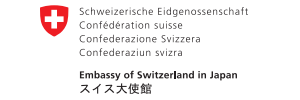Kagoshima in the rain
 Looking for pumice at Nagisa Park Looking for pumice at Nagisa Park
As the title pretty much sums it up, it rained the whole time we were on our walk. Rain or shine, our walkers turned up as they said they would (as did I!). We definitely looked the motley crew in ponchos, rain jackets, with umbrellas and a bear-head hat, walking up the road towards Shiroyama Observation Deck. Not that any of that gear stopped the rain from soaking us to the skin.
 At Sakurajima ferry terminal heading to Kagoshima At Sakurajima ferry terminal heading to Kagoshima
 Tram lines and an approaching tram in Kagoshima city Tram lines and an approaching tram in Kagoshima city
The funny thing about having rain after an eruption from Sakurajima yesterday meant that there was ash mixed with the rain. I had hoped the heavy rain would wash the ash of the car, but things only got dusty after the rain water dried off.
 Cars here get pretty dirty because of volcanic ash Cars here get pretty dirty because of volcanic ash
Along the walk, I learnt more about Kagoshima. Like,the reason why food in Kagoshima is sweet is because sugar was a rare commodity in the early days and was only put into food for special or important guests. Over time, the local flavours evolved to become sweeter as it got more common. For example, Kagoshima’s soy sauce is sweeter than Tokyo’s! (It was a sweet surprise for my tastebuds.)
Or that those who live honourably and embody the spirit of the Samurai are also called Satsuma Hayato.
 The frogs came out to play, thanks to the rain. The frogs came out to play, thanks to the rain.
Or how do those living on Sakurajima deal with living by an active volcano? For those who have lived most of their lives on the island, their first thought when there is an eruption is the wind direction (if the ash would blow in their direction) instead of escape. Don’t be worried if you’re here in the event of a major eruption as there are escape/contingency plans.
 Team picture number 1 beneath Saigo's statue. Team picture number 1 beneath Saigo's statue.
Iwamoto-san from where I'm staying, Sakurajima Seaside Hotel, joined me on my last leg of my walk at Nagisa Park in Sakurajima, explaining how the land the park is on came to existence thanks to a massive eruption 99 years ago. You can see lots of volcanic rock in the area and people also pick “karui ishi”, literally light stone, or also known as pumice, at the park.
Ending at the foot bath in Nagisa Park is a great idea after all the walking. There is the view of Sakurajima on one side, and the Kagoshima city view on the other. Did I mention that there’s plenty of space and it’s also free for everyone?
 Lots of seats for everyone. Lots of seats for everyone.
 This faces the sea and Kagoshima city. Watching the sun set from here must be beautiful. This faces the sea and Kagoshima city. Watching the sun set from here must be beautiful.
 Half of Sakurajima covered in smoke/by clouds. Or is it a smoke cloud? Half of Sakurajima covered in smoke/by clouds. Or is it a smoke cloud?
My room faces the ocean, so there's the view of Ibusuki to look forward to in the morning and sunset during dinner if the weather prevails. Dinner was served in my room and it was a grand affair. There were many different dishes, with sashimi, stewed pork and vegetables, simmered vegetables and the list continues. Not only was it difficult to decide which to eat first, I was completely stuffed after the meal! (Bath before dinner, sleep after dinner is the way to go. haha)
 One day, there'll be a lick your screen taste function. Then you too, can taste the difference in the soy sauce. One day, there'll be a lick your screen taste function. Then you too, can taste the difference in the soy sauce.
The walk on Day 4 looks like it’s going to be a killer. It must be why I’m being fed so well now. Those who are up for the challenge, eat well and I’ll see you there.
ありがとうごわす / Arigatougowasu (Kagoshima dialect for thank you)
 Team picture number 2 before we boarded the ferry to go to Sakurajima. Team picture number 2 before we boarded the ferry to go to Sakurajima.
 The rain in Kagoshima also brought out other hardly seen animals. The rain in Kagoshima also brought out other hardly seen animals.
 2000yen notes are quite hard to come by on Honshu, but apparently common enough in Kagoshima. 2000yen notes are quite hard to come by on Honshu, but apparently common enough in Kagoshima.
 Some of the world's largest daikons are grown in Sakurajima. Some of the world's largest daikons are grown in Sakurajima.
 Sakurajima also grows some of the world's smallest mikans. Sakurajima also grows some of the world's smallest mikans.
|















